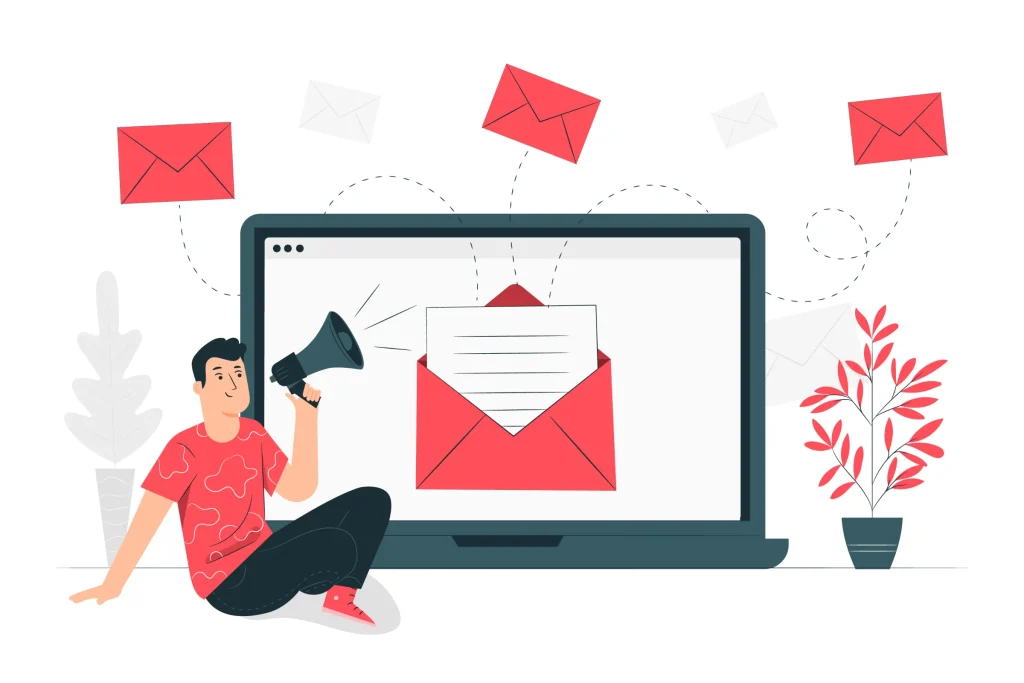Effective marketing strategies are essential for businesses to thrive. One approach that has gained significant traction in recent years is inbound marketing. Unlike traditional outbound methods that interrupt consumers with advertisements, inbound marketing focuses on attracting and engaging potential customers through valuable content and experiences.
In this article, we’ll explore the fundamentals of inbound marketing and its significance within the broader realm of digital marketing. From understanding the core principles to implementing effective strategies and leveraging cutting-edge tools, we’ll delve into everything business owners need to know to harness the power of inbound marketing for their brands.
Read along and uncover the intricacies of inbound marketing and discover how it can revolutionize your digital marketing efforts, drive growth, and foster lasting connections with your target audience. Whether you’re a seasoned marketer or new to the world of digital marketing, this comprehensive guide will provide valuable insights and actionable steps to help you navigate the evolving landscape of inbound marketing successfully.
What is Inbound Marketing?
Inbound marketing is a customer-centric approach that prioritizes building relationships with potential customers by providing them with valuable and relevant content. Unlike traditional outbound marketing, which relies on interruptive tactics like cold calling and mass advertising, inbound marketing aims to attract prospects naturally through channels such as blogs, social media, and search engines.
Key Elements of Inbound Marketing
- Content Creation: High-quality, informative content is at the core of inbound marketing. This includes blog posts, videos, podcasts, eBooks, and other resources that address the needs and interests of your target audience.
- Search Engine Optimization (SEO): By optimizing your content for relevant keywords and improving your website’s visibility in search engine results, you can attract organic traffic and increase your online presence.
- Social Media Engagement: Building a strong presence on social media platforms allows you to connect with your audience, share valuable content, and foster relationships that lead to customer loyalty and advocacy.
- Email Marketing: Sending personalized and targeted emails to your subscribers helps nurture leads, drive conversions, and keep your audience engaged over time.
- Lead Generation and Nurturing: Inbound marketing focuses on capturing leads through forms, landing pages, and gated content, then nurturing them with relevant information until they are ready to make a purchase decision.
- Analytics and Measurement: Tracking key metrics such as website traffic, conversion rates, and customer engagement allows you to evaluate the effectiveness of your inbound marketing efforts and make data-driven decisions to optimize performance.
Benefits of Inbound Marketing
Cost-Effectiveness
Compared to traditional outbound marketing methods like print ads and TV commercials, inbound marketing tends to be more cost-effective. By focusing on creating valuable content and leveraging digital channels, businesses can reach their target audience at a fraction of the cost.
Increased Brand Visibility
Through consistent content creation and optimization for search engines, inbound marketing helps businesses improve their online visibility. By ranking higher in search results and maintaining an active presence on social media, brands can reach a wider audience and increase brand awareness.
Targeted Audience Reach
Inbound marketing allows businesses to target specific demographics, interests, and behaviours, ensuring that their message resonates with the right audience. By delivering personalized content to potential customers who are actively seeking solutions to their problems, businesses can drive higher engagement and conversions.
Enhanced Customer Relationships
By providing valuable and relevant content that addresses the needs and pain points of their audience, businesses can establish themselves as trusted authorities in their industry. This helps build stronger relationships with customers, leading to increased loyalty and advocacy over time.
Long-Term Results
Unlike traditional advertising campaigns that have a limited lifespan, the benefits of inbound marketing tend to compound over time. High-quality content continues to attract organic traffic, generate leads, and drive conversions long after it’s been published, resulting in sustained growth and ROI for businesses.
Measurable Results
Inbound marketing relies heavily on data and analytics to track the performance of campaigns and initiatives. By measuring key metrics such as website traffic, conversion rates, and customer engagement, businesses can gain valuable insights into the effectiveness of their marketing efforts and make informed decisions to optimize performance.
Improved Lead Quality
Inbound marketing focuses on attracting leads who are already interested in the products or services offered by a business. By providing valuable content that addresses their specific needs and pain points, businesses can attract higher-quality leads that are more likely to convert into customers.
Higher Conversion Rates
Inbound marketing strategies such as content marketing, email marketing, and social media marketing are designed to nurture leads through the sales funnel. By providing relevant and timely information at each stage of the buyer’s journey, businesses can increase conversion rates and drive more sales.
Greater Customer Engagement
Inbound marketing encourages two-way communication between businesses and their audience, fostering greater engagement and interaction. Through social media, blogs, and other digital channels, businesses can engage with customers in real time, answer their questions, and address their concerns, leading to stronger relationships and brand loyalty.
Enhanced Brand Authority
By consistently publishing high-quality content that educates, informs, and entertains its audience, businesses can establish themselves as thought leaders and experts in their industry. This helps to build credibility and trust with customers, making it easier to influence their purchasing decisions.
Inbound Marketing Strategies
Content Marketing
- Blogging: Regularly publish informative and engaging blog posts that address common pain points and questions within your industry. This helps establish your brand as an authority and attracts organic traffic.
- eBooks and Guides: Create in-depth resources such as eBooks, guides, and whitepapers that provide valuable insights and solutions to your audience’s challenges. Offer these resources as gated content to capture leads.
- Video Content: Produce engaging video content for platforms like YouTube and social media. Videos can include product demonstrations, tutorials, behind-the-scenes footage, and customer testimonials.
- Infographics: Visualize complex information and data in the form of visually appealing infographics. Share these graphics on your website and social media channels to increase engagement and drive traffic.
Search Engine Optimization (SEO)
- Keyword Research: Identify relevant keywords and phrases that your target audience is searching for. Use tools like Google Keyword Planner and SEMrush to discover high-volume, low-competition keywords.
- On-Page Optimization: Optimize your website’s on-page elements such as title tags, meta descriptions, headings, and image alt tags. Ensure that your content is well-structured and includes targeted keywords naturally.
- Content Creation: Produce high-quality, informative content that satisfies user intent and provides value to your audience. Focus on creating comprehensive, in-depth articles that answer common questions and address specific topics within your niche.
- Link Building: Earn backlinks from reputable websites within your industry to improve your website’s authority and rankings. Focus on acquiring natural, relevant links through guest blogging, outreach campaigns, and content promotion.
Social Media Marketing
- Platform Selection: Identify the social media platforms where your target audience is most active. Focus your efforts on platforms like Facebook, Twitter, LinkedIn, Instagram, and Pinterest.
- Content Sharing: Share a variety of content types, including blog posts, videos, infographics, and user-generated content. Use engaging visuals and compelling captions to capture users’ attention and encourage interaction.
- Community Engagement: Actively engage with your audience by responding to comments, messages, and mentions. Encourage conversation and foster a sense of community around your brand.
- Paid Advertising: Consider investing in paid social media advertising to reach a larger audience and drive targeted traffic to your website. Use targeting options to reach users based on demographics, interests, and behaviour.
Email Marketing

- List Building: Build and segment your email list to deliver targeted messages to different audience segments. Offer incentives such as discounts, eBooks, or exclusive content to encourage sign-ups.
- Personalisation: Personalize your email campaigns based on subscriber preferences, behaviour, and demographics. Use dynamic content and personalised recommendations to increase engagement and conversion rates.
- Automation: Set up automated email workflows to nurture leads and guide them through the sales funnel. Use triggers such as website visits, email opens, and form submissions to send relevant messages at the right time.
- Testing and Optimization: Continuously test different elements of your email campaigns, including subject lines, send times, and CTAs. Analyse the results and optimise your campaigns based on performance data.
Lead Generation
- Lead Magnets: Create valuable lead magnets such as eBooks, whitepapers, webinars, and templates to incentivise sign-ups. Promote these lead magnets across your website and social media channels.
- Landing Pages: Design dedicated landing pages for your lead magnets to capture visitor information. Use compelling headlines, persuasive copy, and clear CTAs to encourage conversions.
- Forms and Opt-In Boxes: Place opt-in forms strategically throughout your website to capture leads at various touchpoints. Keep forms short and only ask for essential information to minimise friction.
- Exit-Intent Popups: Use exit-intent popups to capture leads from visitors who are about to leave your website. Offer a valuable resource or discount in exchange for their email address.
Marketing Automation
- Workflow Creation: Develop automated workflows to streamline your marketing processes and nurture leads throughout their buyer journey. Map out the customer journey and create relevant email sequences for each stage.
- Personalisation: Leverage marketing automation tools to deliver personalised messages based on user behaviour, preferences, and engagement history. Use dynamic content and segmentation to tailor your communications to individual contacts.
- Lead Scoring: Implement lead scoring to prioritise leads based on their engagement level and readiness to buy. Assign point values to various actions such as email opens, link clicks, and website visits to identify hot leads.
- Reporting and Analysis: Track the performance of your automated workflows and analyse key metrics such as open rates, click-through rates, and conversion rates. Use this data to refine your automation strategies and improve campaign effectiveness.
Conversion Rate Optimization (CRO)
- User Experience (UX) Design: Optimize your website’s design and navigation to create a seamless user experience. Ensure that your site is mobile-friendly, fast-loading, and easy to navigate on all devices.
- A/B Testing: Conduct A/B tests on various elements of your website, including headlines, CTAs, page layouts, and form designs. Test one variable at a time and analyse the results to identify the most effective changes.
- Conversion Funnel Analysis: Analyze your website’s conversion funnel to identify potential bottlenecks and areas for improvement. Use tools like Google Analytics to track user behaviour and identify drop-off points in the funnel.
- Social Proof: Incorporate social proof elements such as customer testimonials, case studies, and reviews to build trust and credibility with your audience. Showcase real-life examples of satisfied customers to reassure visitors and encourage conversions.
Customer Relationship Management (CRM)

- Data Collection: Collect and store customer data such as contact information, purchase history, and interactions across various touchpoints. Use CRM software to centralise this data and create a unified view of each customer.
- Lead Management: Manage leads effectively by tracking their progress through the sales funnel and assigning follow-up tasks to sales teams. Use lead scoring and segmentation to prioritise leads and tailor your outreach efforts.
- Customer Segmentation: Segment your customer base into groups based on common characteristics, behaviours, and preferences. Use segmentation criteria such as demographics, purchase history, and engagement level to deliver targeted marketing messages.
- Personalised Communication: Use CRM data to personalise your marketing communications and provide relevant offers and recommendations to each customer. Tailor your messaging based on past interactions and preferences to enhance the customer experience.
What are Some Common Challenges in Inbound Marketing?
Content Creation Challenges
Challenge: Generating high-quality content consistently can be time-consuming and resource-intensive.
Solution: Plan your content calendar in advance and leverage content repurposing techniques to maximise the value of existing content. Consider outsourcing content creation to freelancers or agencies to lighten the workload.
Lead Generation Hurdles
Challenge: Generating a steady stream of qualified leads can be challenging, especially for businesses in competitive industries.
Solution: Invest in targeted lead generation strategies such as gated content, social media advertising, and search engine optimisation (SEO). Focus on creating valuable offers and optimising landing pages to improve conversion rates.
Conversion Rate Optimization (CRO) Issues
Challenge: Converting website visitors into leads and customers requires a deep understanding of user behaviour and preferences.
Solution: Conduct regular A/B testing on key elements of your website, such as headlines, CTAs, and form designs, to identify and implement improvements. Use heatmaps and user recordings to gain insights into user interactions and optimise user experience accordingly.
Marketing Automation Pitfalls
Challenge: Implementing and managing marketing automation workflows effectively can be complex, leading to potential errors and inefficiencies.
Solution: Invest in user-friendly marketing automation platforms that offer comprehensive training and support. Start with simple workflows and gradually scale up as you gain experience and confidence.
Measuring ROI and Attribution Challenges
Challenge: Determining the return on investment (ROI) of inbound marketing efforts and attributing conversions accurately can be challenging.
Solution: Implement robust tracking and analytics tools to monitor the performance of your inbound marketing campaigns. Use multi-touch attribution models and track key performance indicators (KPIs) such as conversion rate, customer lifetime value (CLV), and cost per acquisition (CPA).
Scaling Content Production
Challenge: Scaling content production while maintaining quality and consistency can be daunting, especially for growing businesses.
Solution: Leverage content creation tools and workflows to streamline the content production process. Consider hiring additional content creators or collaborating with industry influencers to diversify your content offerings.
Adapting to Algorithm Changes
Challenge: Keeping up with frequent changes to search engine algorithms and social media algorithms can impact your visibility and reach.
Solution: Stay informed about industry trends and algorithm updates by following reputable sources and participating in relevant forums and communities. Focus on creating high-quality, user-focused content that aligns with best practices and guidelines.
Balancing Quantity and Quality
Challenge: Striking the right balance between producing a high volume of content and maintaining its quality can be challenging.
Solution: Prioritize quality over quantity and focus on creating content that provides unique value to your target audience. Invest in content planning and strategy to ensure that each piece of content aligns with your business goals and resonates with your audience.
Inbound marketing offers numerous benefits for businesses, including enhanced brand visibility, lead generation, and customer engagement. By understanding the core principles of inbound marketing and implementing effective strategies, businesses can overcome common challenges such as content creation, lead generation, and conversion optimisation.
However, navigating the complexities of inbound marketing requires careful planning, consistent effort, and a willingness to adapt to changing trends and algorithms. By addressing challenges with proactive solutions and leveraging the power of data-driven insights, businesses can maximise their ROI and achieve sustainable growth.
If you’re ready to take your digital marketing efforts to the next level and capitalise on the potential of inbound marketing, we’re here to help. Contact us today to learn how our experienced team can tailor a comprehensive inbound marketing strategy to suit your business needs and drive meaningful results. Let’s embark on a journey to success together!



